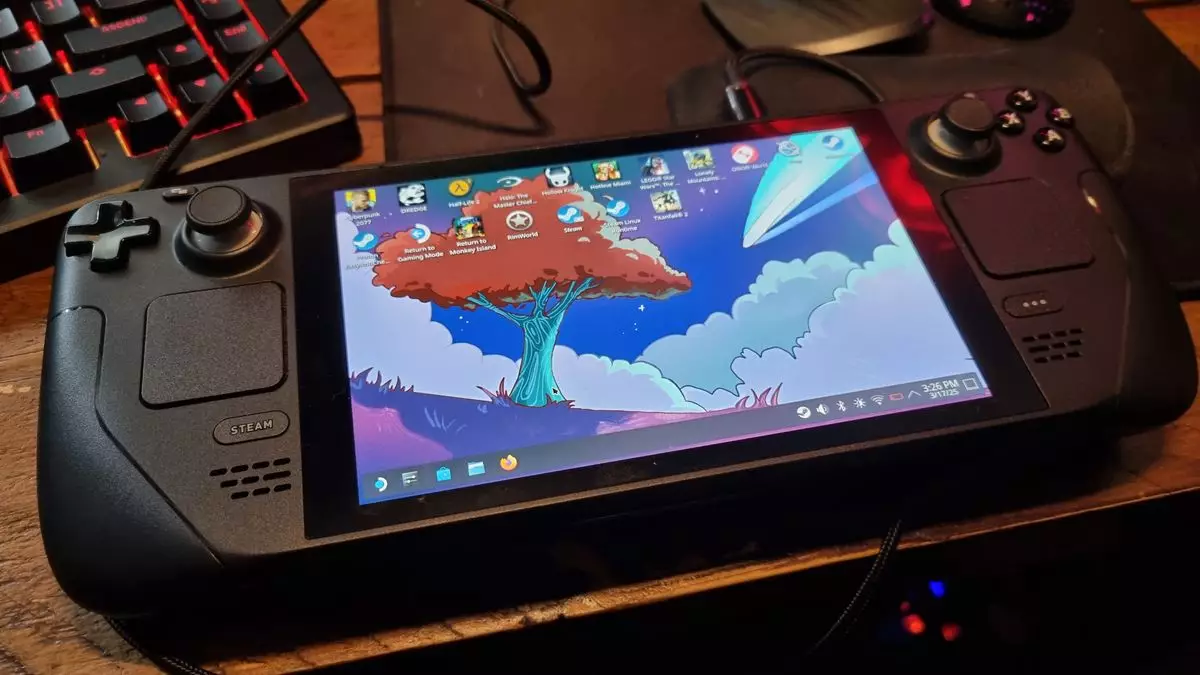Since its debut in 2022 alongside the original Steam Deck, SteamOS 3.0 has held great promise for gamers eager to experience handheld gaming in a more immersive and streamlined environment. However, the operating system’s growth beyond the Steam Deck itself has been gradual. With the anticipated release of the Lenovo Legion Go S version, which is set to integrate SteamOS in May, there are exciting developments on the horizon. This indicates Valve’s commitment to expanding its ecosystem beyond its flagship device, potentially reshaping portable gaming for the better.
The Rise of Non-Steam Deck Handhelds
The introduction of support for non-Steam Deck handhelds is a crucial step for Valve. The recent SteamOS 3.7.0 Preview update, dubbed the “Pi Day” release, emphasizes this shift by focusing on compatibility with alternative devices. However, with the Lenovo Legion Go S being the only confirmed recipient of SteamOS’s embrace so far, the question arises: will other manufacturers soon follow suit? Given the rapid evolution of handheld gaming technology, it would be surprising if more entrants did not emerge onto the scene. Valve’s proactive approach could catalyze a new wave of Linux-based handheld devices that integrate Steam seamlessly.
User Interface Enhancements in Plasma 6.2.5
One of the standout features of the most recent update is the introduction of Plasma 6.2.5, which boasts significant UI enhancements that dramatically transform the user experience. With a restructured settings menu, charming floating panels, and a retro-futuristic cube effect reminiscent of classic hacker-themed movies, this update sets itself apart by prioritizing user engagement. The aesthetic improvement alone is enough to make users excited about exploring the desktop mode. Familiarity with a pleasing interface often leads to more extended periods of gameplay and exploration within the OS, thereby fostering a stronger user base.
Addressing Bugs and Enhancements
Despite its allure, Valve’s update also comes with the caveat of being a Preview version, which means that users may encounter various bugs during their initial experiences. Reports have indicated issues like unintentional desktop flashes upon pressing the power button and sporadic system hangs. While it’s common for new software to have glitches, the presence of these technical hurdles could deter less tech-savvy users from the otherwise engaging SteamOS experience. On the flip side, the inclusion of a new wallpaper, “Scarlet Tree,” adds a fresh touch to the visual palette on the Steam Deck, even if it feels secondary in importance compared to the platform’s broader enhancements.
Bluetooth and Display Improvements
Another noteworthy aspect of the 3.7.0 update is the attention given to fixing Bluetooth device compatibility and display issues when connected to the Deck Dock. These upgrades are essential to the overall functionality of SteamOS, particularly for users who enjoy a more extensive setup with their handheld devices. Smooth connectivity and reliable display options are factors that many gamers consider essential to an enjoyable experience. By systematically addressing these concerns, Valve demonstrates its understanding of user frustrations and solidifies its position as a developer committed to delivering a seamless gaming ecosystem.
The Bigger Picture: Compatibility vs. Competition
As Valve pushes forward with SteamOS, the question remains whether the timing is optimal for such expansive plans. Many competing handheld devices currently leverage Windows 11 as their primary operating system, offering compatible interfaces that allow users to access their games smoothly. While Valve’s unique focus on Steam integration stands out, the growing competition in the handheld market means SteamOS enthusiasts may wonder if the brand can catch up in time. However, the prospect of providing a tailored gaming experience that tightly weaves together hardware, software, and service is a powerful strategy that many gaming-centric users crave.
Welcoming Progress in Handheld Gaming
Despite existing challenges, the introduction of SteamOS 3.0 support for non-Steam Deck devices marks a significant turning point in handheld gaming. Although improvements may arrive later than some would prefer, the potential for a vibrant ecosystem resembling what Steam has already achieved on the Deck is exceptionally promising. Anticipation builds as we stand on the cusp of notable growth, not just for Valve but for anyone who enjoys gaming on the go. As we await further announcements, it’s essential to keep an eye on Valve’s journey in improving the broader landscape of handheld devices.

